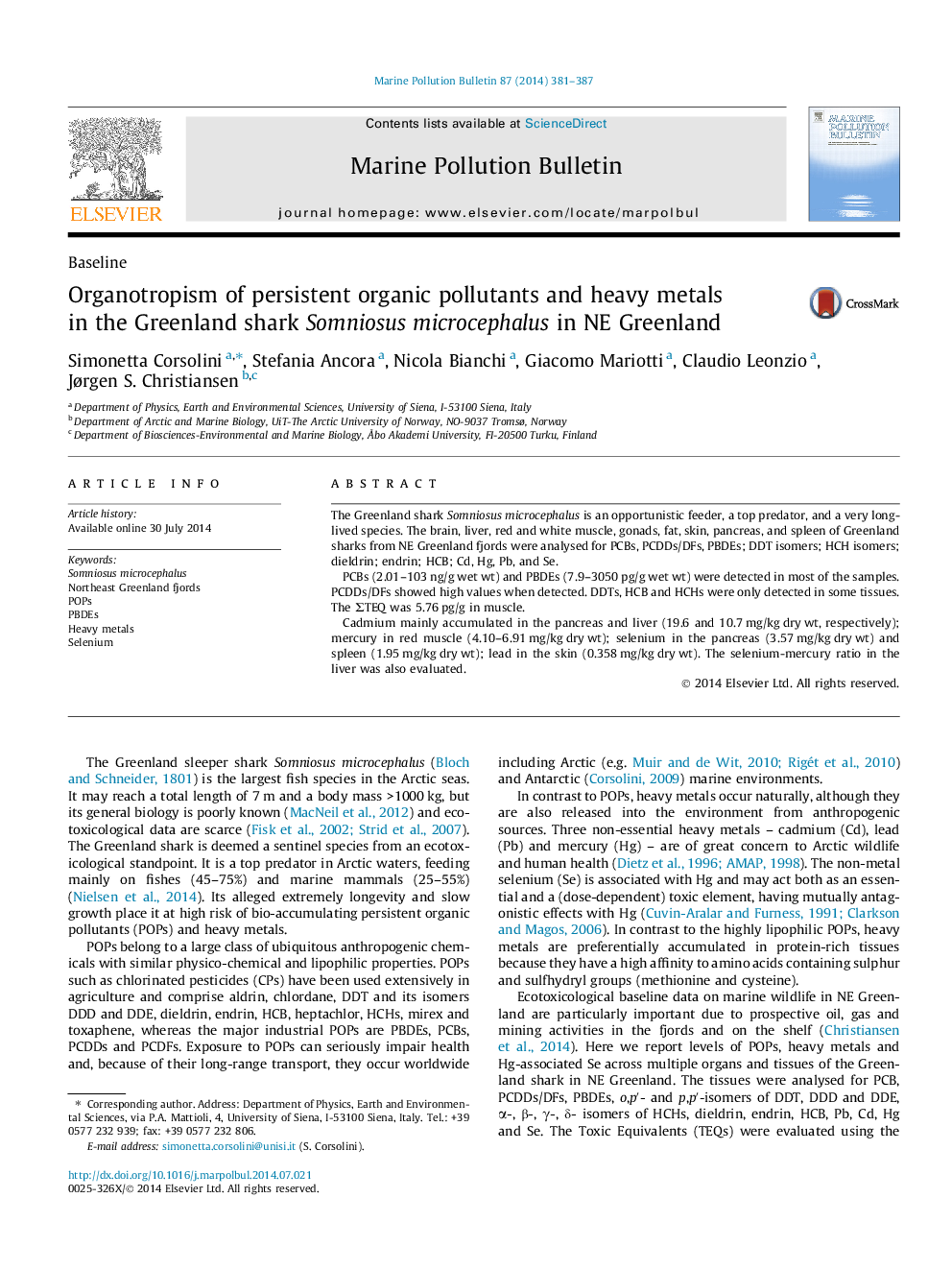| Article ID | Journal | Published Year | Pages | File Type |
|---|---|---|---|---|
| 6357699 | Marine Pollution Bulletin | 2014 | 7 Pages |
â¢PCBs were more abundant in liver > muscle > fat and PBDEs in gonads > spleen > muscle.â¢Dioxin-like compounds and TEQs were lower than/comparable to those in Arctic species.â¢Cd and Se accumulated in the pancreas, mercury in muscle, lead in the skin.â¢The protective mechanism between Se and Hg is valid for this species.â¢First study on contaminant distribution across multiple tissues of Somniosus microcephalus.
The Greenland shark Somniosus microcephalus is an opportunistic feeder, a top predator, and a very long-lived species. The brain, liver, red and white muscle, gonads, fat, skin, pancreas, and spleen of Greenland sharks from NE Greenland fjords were analysed for PCBs, PCDDs/DFs, PBDEs; DDT isomers; HCH isomers; dieldrin; endrin; HCB; Cd, Hg, Pb, and Se.PCBs (2.01-103 ng/g wet wt) and PBDEs (7.9-3050 pg/g wet wt) were detected in most of the samples. PCDDs/DFs showed high values when detected. DDTs, HCB and HCHs were only detected in some tissues. The ΣTEQ was 5.76 pg/g in muscle.Cadmium mainly accumulated in the pancreas and liver (19.6 and 10.7 mg/kg dry wt, respectively); mercury in red muscle (4.10-6.91 mg/kg dry wt); selenium in the pancreas (3.57 mg/kg dry wt) and spleen (1.95 mg/kg dry wt); lead in the skin (0.358 mg/kg dry wt). The selenium-mercury ratio in the liver was also evaluated.
